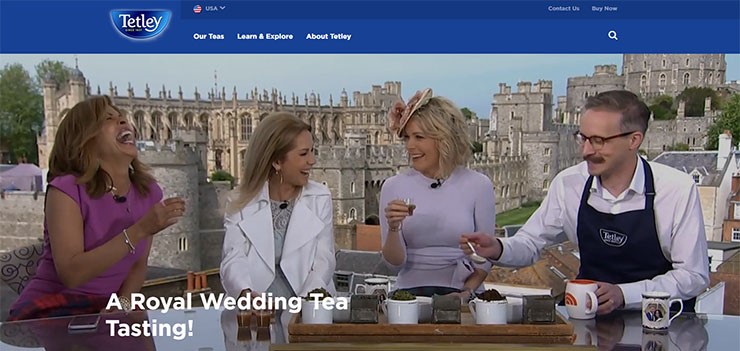
![]() Insights
Insights
International
US to UK localization is frequently overlooked when expanding internationally. Our clients are often surprised when they discover there is a lot more to consider than changing the odd ‘s’ to a ‘z’. Other elements, such as lexical differences and messaging, need to be considered for businesses to appear local and authentic.
Here is a summary of the key areas that should be evaluated during the UK localization process.
There are many spelling differences between US and UK English words. Whilst it’s common knowledge that for certain words the ‘s’ needs to be replaced with a ‘z’, there are other spelling differences you need to be aware of. Here are some examples:
There are also distinct differences when it comes to grammar and punctuation. For example:
There are also lexical differences between UK and US English that should be looked at during the localization process.
For example, an online fashion retailer would need to change the word ‘jumpers’ to ‘sweaters’ for its product descriptions in the US. There is a peak in the US around December for the search term ‘sweaters’, but no peak for the word ‘jumpers’. In the same time period in the UK, the opposite is true.
This example highlights the importance of ensuring country-specific keyword research is carried out during the localization process, even when targeting a fellow English-speaking country. This ensures your product and category pages are optimized for the right local words with high search volume and high buying intent.
Simply translating US English content into UK English doesn’t deliver optimal results without also adapting your messaging to the culture. This adaptation often requires a more creative process than translation. Transcreation is different to translation, as content is generated based on a project brief.
In effect, this is a native copywriting service in your target language, using native copywriters who are based in the country. The means the content is 100% target-culture appropriate, whilst maintaining the desired brand messaging. Often companies mistakenly think they only need one marketing message for all English-speaking countries, but different markets needed to be treated differently. Coca-Cola is a prime example of a company that understands the need for different messaging for UK and US audiences.
Its content is created specifically to engage different audiences. For their UK audience they featured content on Dame Joanna Lumley, a well-known English actress and author, for its launch of Fuze Tea.
However, in the US, Coca-Cola featured content on four US-based artists to support the launch of its regionally inspired speciality Coca-Cola flavors. The products, campaigns and content have been specifically chosen to resonate in their individual markets.

Messaging is also important when it comes brand names. When entering a new market, evaluating your brand name at the start ensures it doesn’t cause offence or sound too similar to existing local companies.
An example of this is American company T.J.Maxx. When entering the UK market, the company realized there was a UK retailer called T.J. Hughes. To avoid confusion between the companies and build its own brand, the company rebranded as T.K.Maxx for the UK.
The US tend to respond to imagery that evokes power. There is a lot of pride associated with elements of personal identity, such as nationality, culture and sports teams.
Race and racial identity are currently huge issues in America, and US advertisers are aware of the need to feature people of all races and cultures.
There is an increasing emphasis on diversity of representation and a rapidly growing Latin population is making its presence felt in advertising in a number of ways, through music, imagery and language.
An example of this is the rise of advertising in America that features biracial couples.
US copy tends to be much more candid, establishing a direct rapport with the customer and emitting friendliness. If given a choice between understatement and intentional exaggeration, US text would often opts for the latter.
The US tone of voice communicates a sense of optimism and togetherness. This includes patriotism and a ‘can-do attitude’, two things that might feel slightly intense to someone in the UK.
As a rule, US English is generally very informal when compared with UK English. Colloquial language is heavily used, with things from popular culture quickly finding their way into advertising.
In general, US audiences expect to be catered to and shown that they’re valued as a customer. They expect convenience, speed and a professional service. And all this needs to be communicated explicitly.
For the US market, there is a trend towards sleek and modern sites with interactive elements and a variety of routes to the same destination. Websites should have a good search functionality, with a range of filter options, allowing products to be found easily. Uncluttered pages and dynamic visuals are key, and the ordering process should be seamless with as few steps as possible.
For most companies, being seen as ‘local’ is key to success. However, in every market there will be businesses that can, and do, succeed based on their foreign roots.
For UK companies entering into the US market, anything that taps into the widespread American fascination with European history, British culture and art will seem more authentic coming from a UK business. An example of this is Tetley Tea.
During the Royal wedding, the US version of the Tetley Tea website featured coverage of the UK event. They also had a product called ‘British Blend’, which embraced the British selling point of their brand.

Many businesses are simply unaware of just how many differences there are between the US and UK. When it comes to localization, there is no substitute for the natural expertise of a mother-tongue speaker.
Do you want to avoid mistakes when localizing your website?Download our webinar to find out how

![]() Insights
Insights

![]() Insights
Insights

![]() Insights
Insights